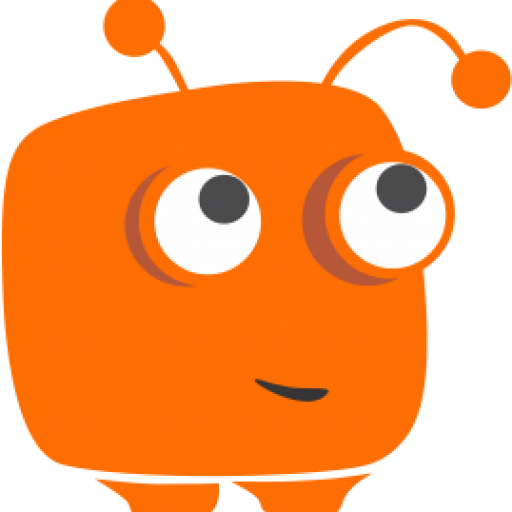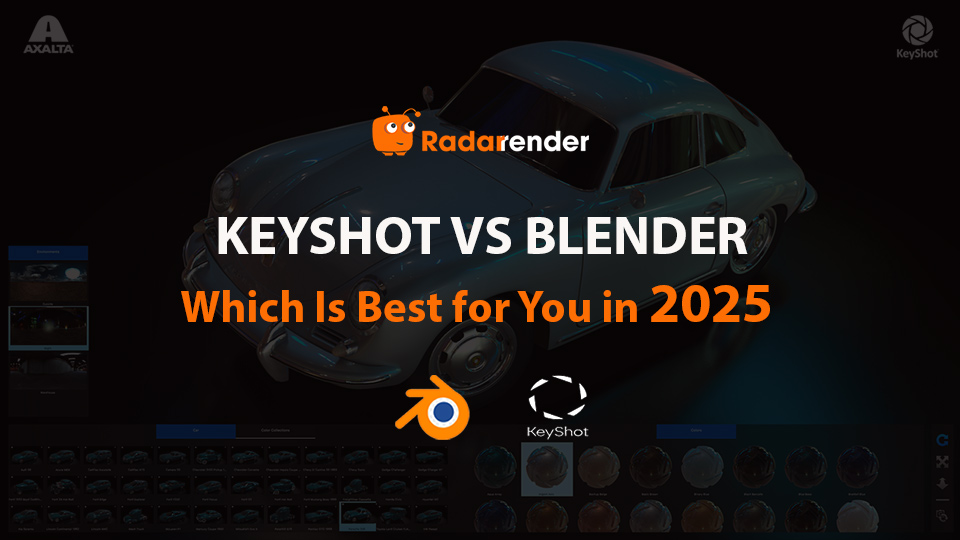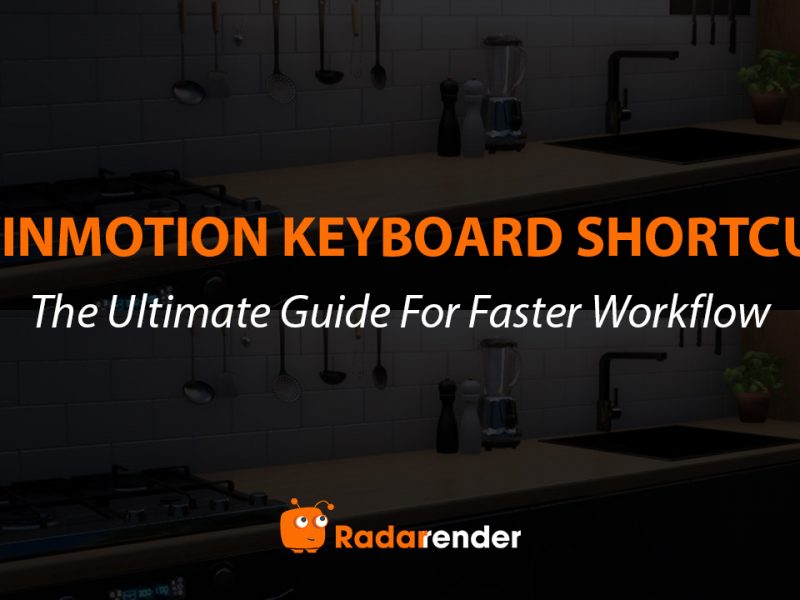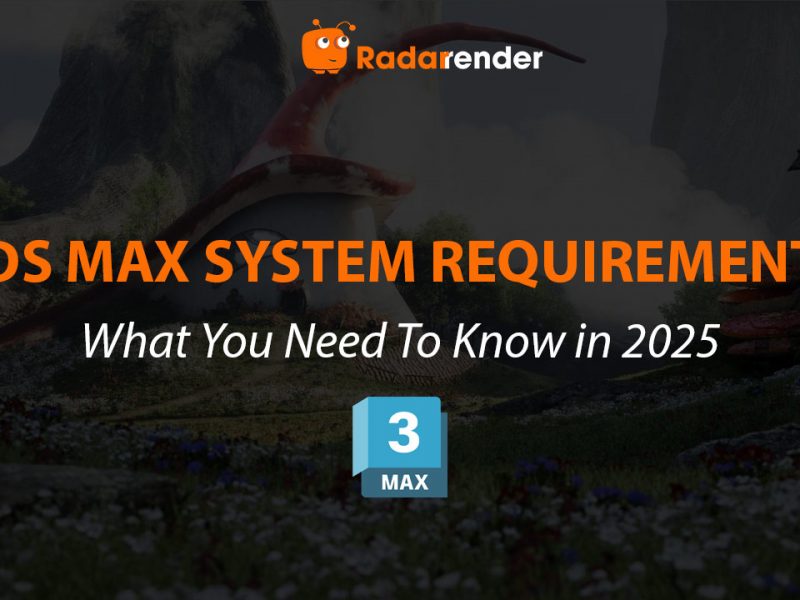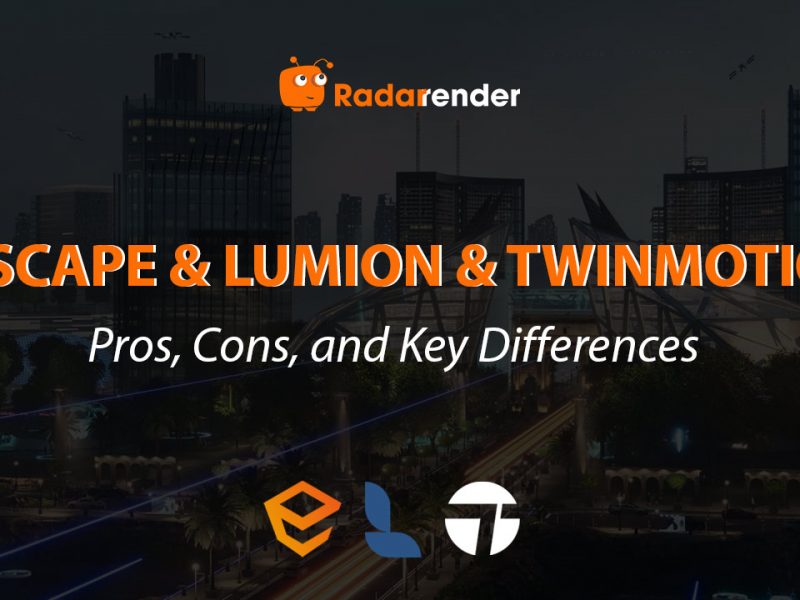KeyShot vs Blender: Which Is Best for You in 2025?
As someone who spends hours every day playing with lighting, textures, and camera angles, I have used both KeyShot and Blender extensively in my 3D modeling journey. Each tool has its own pros and cons, so depending on what you are creating, one tool may be better suited than the other. In this blog, let’s compare KeyShot vs Blender to see which tool is best for your project with Radarrender!
What is KeyShot vs Blender?
1. KeyShot
KeyShot is a standalone rendering engine developed by Luxion. It helps 3D professionals create product visualizations, including images, animations, and output for the web and VR. This software features real-time ray tracing, global illumination, and multi-core mapping, which means you can see realistic results as you make changes. KeyShot offers an intuitive interface, drag-and-drop materials, and speed. Hence, it is a favorite among artists in product design, industrial design, and marketing. In other words, if you are designing products, KeyShot is the way to go.
What makes KeyShot different is that it’s not a modeling tool, it focuses solely on taking existing 3D models (usually from CAD software) and turning them into polished, high-end visuals.
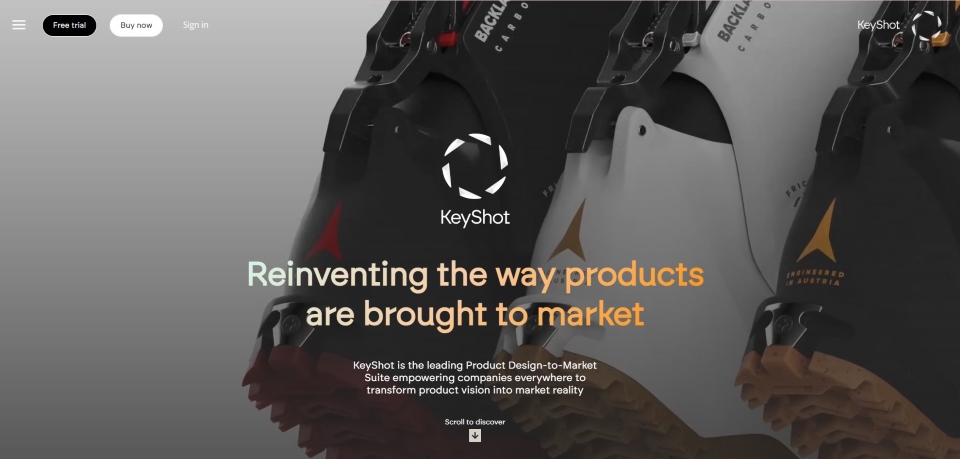
2. Blender
Blender is a free and open-source 3D creation toolkit. It has everything from modeling, sculpting, texturing, animation, compositing, video editing, and rendering. It’s incredibly versatile and backed by a large and passionate community. Plus, it supports 36 languages. Of course, Blender is widely used in animation, game design, visual effects, concept art, and even product design if you know how. Game designer? Animator? Visualizer? Blender’s got you.
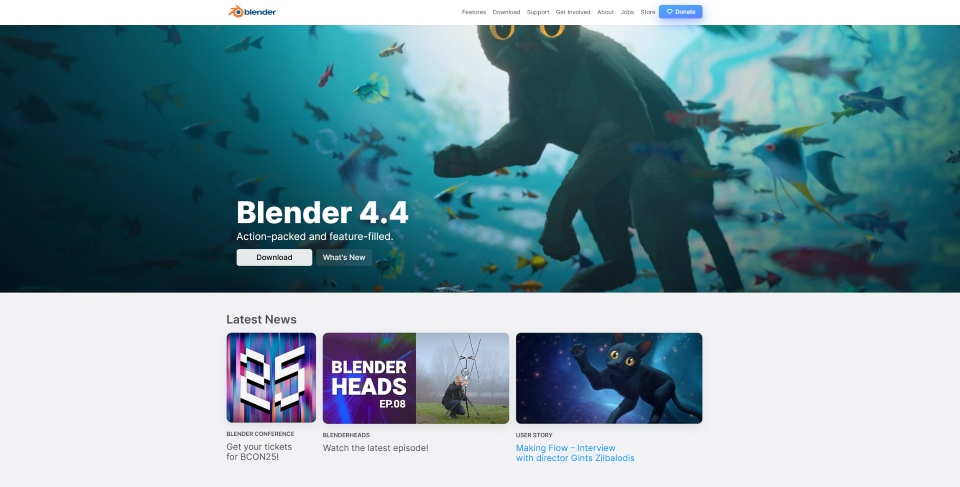
What are the Differences Between KeyShot vs Blender?
1. User Interface
KeyShot is truly built for ease of use. Its clean, minimalistic user interface feels like it was made for non-professional artists. You can import models through LiveLink, drag and drop materials, and simply hit render. It’s surprisingly easy to use, almost everything is straightforward, and in just 3-8 hours, you can create the beautiful image or video you want.
On the other hand, Blender is not too difficult to use, just too overwhelming, so it takes more time. With dozens of features, it can take months for a newbie to get used to 3D modeling, but only a few weeks for an experienced person. Furthermore, learning Blender is an ongoing process as new features and updates are constantly being released.
My take is that if I need a product shot ready for a client in an hour, I’ll use KeyShot. If I want to tinker with simulations, geometry nodes, or do some panoramic animation, I’ll use Blender all day.
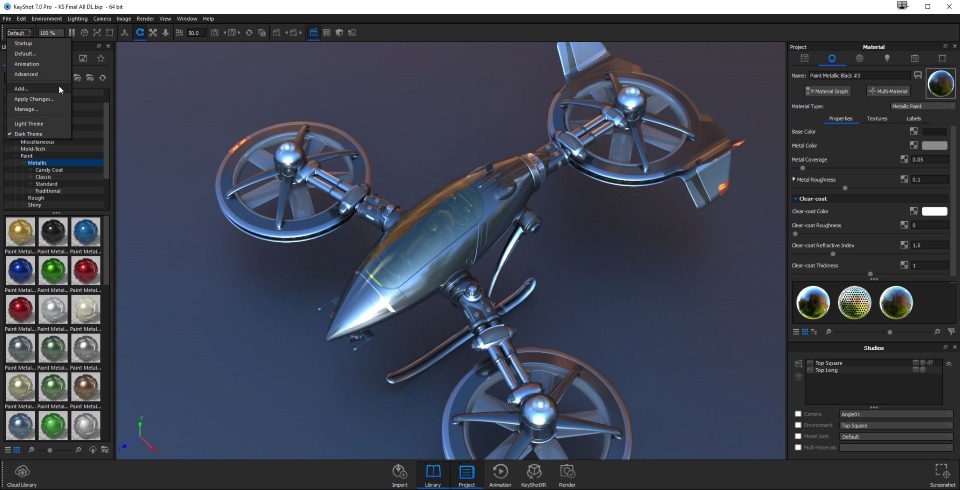
2. Rendering Capabilities
KeyShot and Blender are both popular for their fast, easy-to-tune, seamless rendering workflows. However, KeyShot has a slight edge when it comes to advanced lighting. KeyShot uses its own real-time ray tracing engine and has recently improved GPU support (especially in KeyShot 2025). This engine is great for creating realistic effects, especially for product design and studio lighting scenarios.
While Blender offers you many rendering engines (Cycles, Eevee, and even third-party engines like Octane and Redshift if you want). Cycles is physically accurate and can deliver top-notch photorealistic effects, while Eevee is a real-time engine that is perfect for quick previews or stylized renderings.
Overall, while both try to take full advantage of the user’s CPU and GPU power, both are fast. But Blender gives you more flexibility depending on your hardware. However, KeyShot feels smoother right out of the box without having to tweak settings.
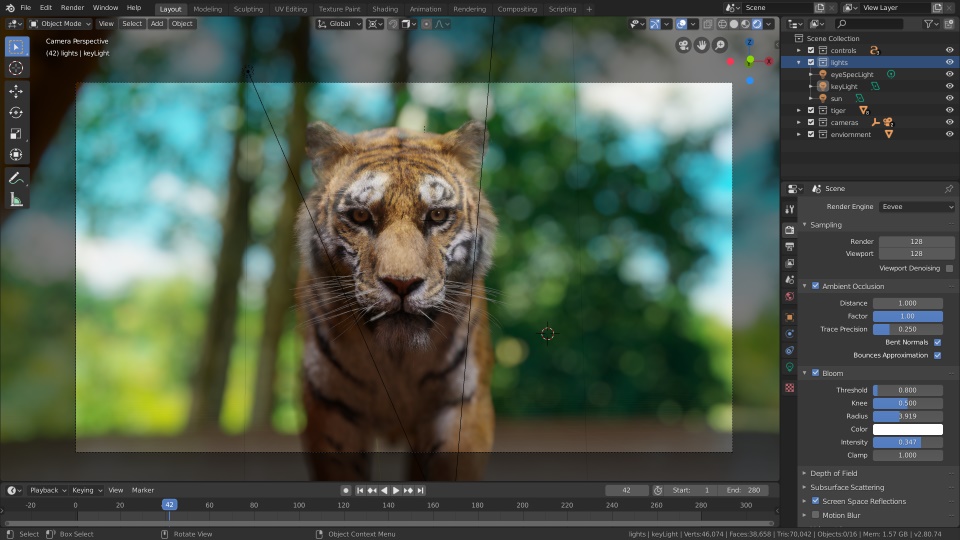
4. Materials and Lighting
Any 3D designer knows the importance of materials and lighting. This is also the difference between the two tools.
KeyShot has a great drag-and-drop material library that users can start using right after the first installation. Metal, plastic, glass, they all work well. Furthermore, KeyShot offers advanced material editing, color management, and geometry tools to add their textures and materials with design vendors like Mold-Tech and Axalta Coating Systems. You can also adjust colors through several color libraries, including PANTONE and RAL.
In addition, KeyShot’s lighting has more advanced options. The default lighting is based on HDRI, global illumination, physical illumination, or the latest Planar lights that help you simulate physical lighting easily. This is also the reason why Keyshot is more appealing to professionals.
On the other hand, Blender also has a large library collection, and users are also free to create and share their own libraries with other users. With Blender, designers can touch volumes, meshes, textures, and curves, and explore the depth of their creations with its rendering engine. There is a lot of room for customization. Lighting setups are relatively flexible, whether it is HDRI, mesh lights, or complex lighting rigs. But overall, there are still fewer advanced options than with KeyShot.
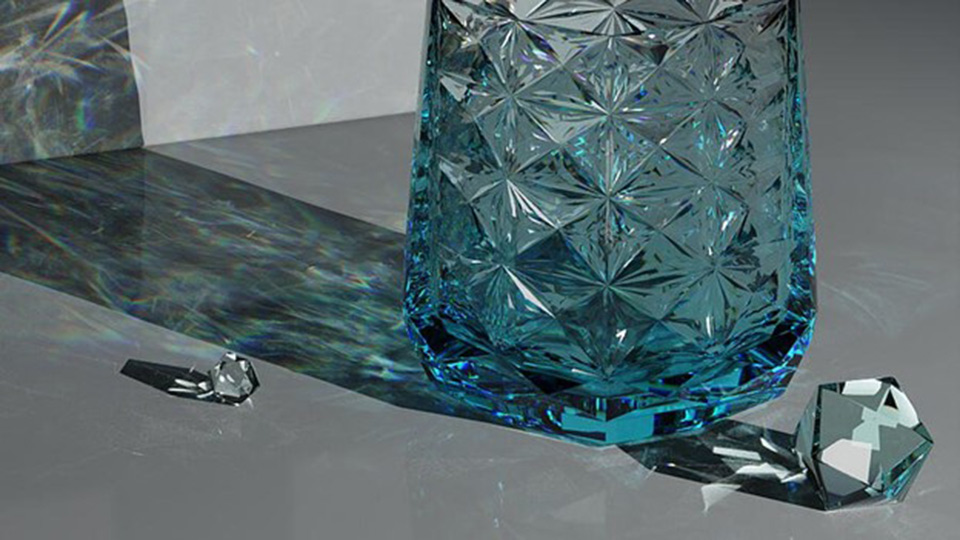
5. Animation and Advanced Features
When it comes to animation, Blender is the winner.
As 3D animation has become more popular over the past few decades, KeyShot and Blender have evolved to make animation easier for everyone. KeyShot has basic animation tools like camera paths, part movement, and fade in/out. It’s a great choice for product demo reels, explosion views, or turntable rendering. But Blender is a full-fledged animation studio. It has a lot of animation tools that make it easy to animate characters, create non-linear animations, and synchronize audio. In other words, you can animate anything from lights, cameras, particles, to characters. It has a timeline, a graph editor, an NLA editor… It’s a whole ecosystem.
6. Workflow Integration
KeyShot integrates well with CAD software such as SolidWorks, Rhino, Fusion 360 with support for over 20 file formats. Importing models is easy with LiveLink and even supports plugins for real-time updates. So KeyShot is a real powerhouse for CAD engineers.
On the other hand, Blender has various add-ons and automation tools that simplify the design process. But this also means a steeper learning curve for users. Also, Blender supports importing most formats (OBJ, FBX, STL, USD, etc.), but is not ideal for CAD-heavy workflows unless you use specific plugins or compositing.
7. Price and Licensing
KeyShot is a paid service, and it’s not cheap. Studio licenses start at around $99/month (billed annually), plus add-ons like Network Rendering, Web Viewer, and VR are separate fees. This is something that many artists find a headache. However, they still pay out of their pocket for the quality. Do you think it’s worth it? The good news is that KeyShot offers a 14-day trial to try before you buy.
When it comes to price, Blender definitely wins because it’s completely free and open-source for everyone. Everything is included: renderer, animation tools, sculpting, compositing, even video editing. No worry about the price, is that perfect?
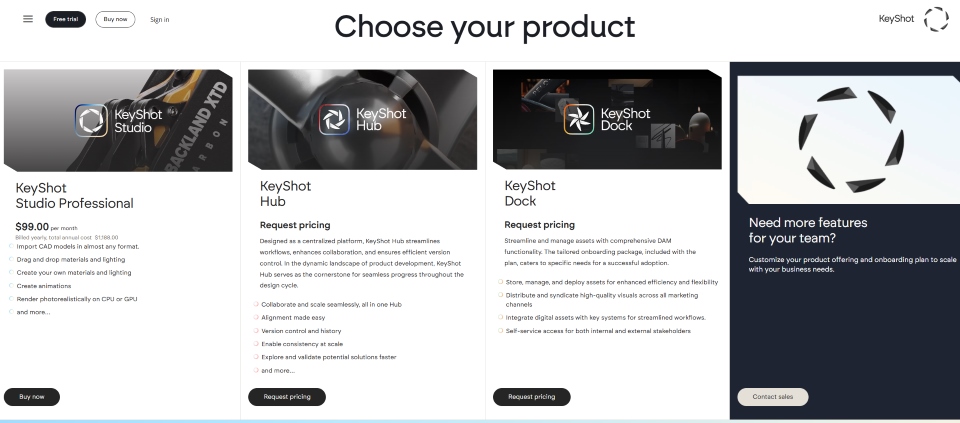
7. Minimum System Requirements
| Specification |
KeyShot |
Blender |
| Operating System | Windows 10 or 11, macOS 11,7 Big Sur or higher | Windows 8.1 (64-bit), macOS 11.2, Linux glibc 2.28+ |
| CPU | Intel or AMD 64-bit processor with SSE4.1 or higher (Intel Xeon except for Xeon Phi and/or AMD Ryzen) | 4-core processor with SSE4.2 Support |
| RAM | 4GB | 8GB |
| GPU | QUADRO RTX 4000 or higher with at least 8GB RAM | Graphics card with 2GB VRAM, OpenGL 4.3+ |
We see that KeyShot requires significantly more powerful hardware if you want to use GPU Rendering. Blender is more flexible, running on many different operating systems and hardware. With Blender, you can still build scenes, model, and render well on mid-range machines.
KeyShot vs Blender: Which One Is Better in 2025?
There is no better software, it depends on your project requirements, budget, and deadline. Below are my use cases and choices.
|
Use Case |
My Pick |
| Product Rendering |
KeyShot |
| CAD Integration |
KeyShot |
| Full Scene Animation |
Blender |
| Creative Control |
Blender |
| Budget-friendly Option |
Blender |
|
Quick, High-quality Output |
KeyShot |
|
Experimental Projects |
Blender |
Personally, I use both depending on the job. I even use both at the same time. I use Blender for modeling and then export to KeyShot for rendering. It’s the perfect combination. If you’re on the fence, Blender is always free, and grab a 14-day trial of KeyShot to give it a try.
Conclusion
In conclusion, KeyShot vs Blender are both great software in the graphics industry. While KeyShot stands out with its professional yet easy-to-use features, Blender is ideal with its free and comprehensive features. Have you tried both KeyShot and Blender? Which one do you prefer, and why? Let me know in the comments.


